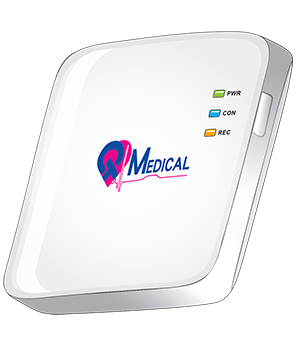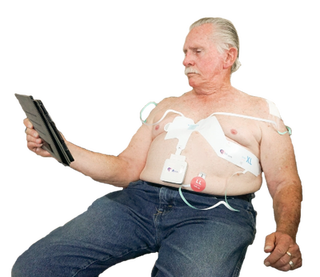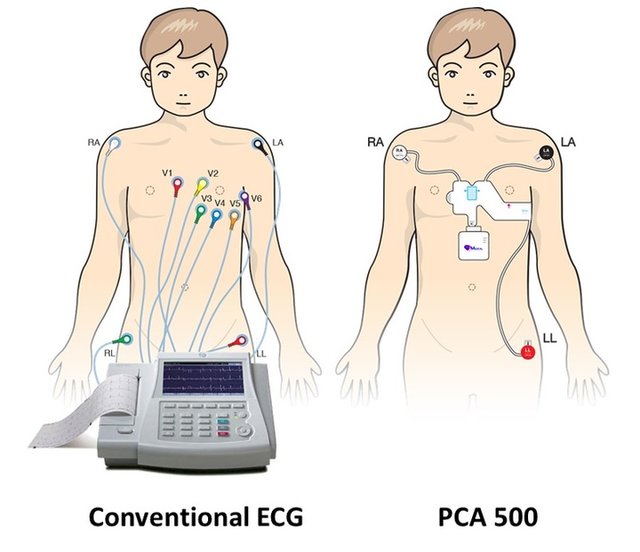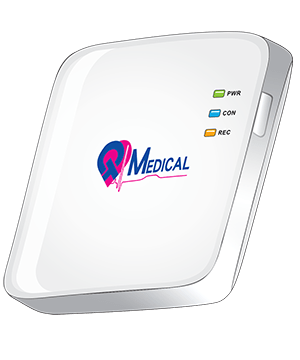
Wearable health technology has the potential to complement health care systems and strategies to detect cardiovascular issues before they become emergent. Wearable technology provides real value for preventive care – which is especially urgent in the cardiology setting. Morbidity and mortality statistics for cardiac-related conditions are extremely grim. According to the Centers for Disease Control and Prevention, heart disease is the top cause of death for both men and women – claiming about 630,000 lives in the US each year. That translates to 25% of deaths from any cause. Heart disease costs the US approximately $200 billion each year. This total includes the cost of health care services, medications, and lost productivity.
Without proper monitoring, patients who have experienced cardiac events face a very high risk of experiencing a second event. Superior technology and investment are the keys to better heart health for all. QT Medical, a health technology company, strives to innovate in the field of telehealth and home care. The company invests in research and development of products that will bring better cardiac care to patients.
QT Medical’s flagship product is the Personal Cardiac Assistant, PCA 500. PCA 500 is the first hospital-quality 12-lead electrocardiogram (ECG or EKG) for personal use. An ECG is one of the most effective diagnostic tests for cardiac conditions. 12-lead ECG testing detects the electrical activity from 12 different views of the heart – providing insight into structural, functional and rhythm issues. The standard 12-lead ECG is a representation of the heart's electrical activity recorded from electrodes on the body surface.
QT Medical’s ECG product joins a rapidly growing market of more accurate heart sensors. Traditional optical heart rate sensors are great for collecting real-time information or resting heart data, which can be a good indication of a person’s current state of health. These heart rate monitors are typically based on the same technology - light-based optical technology (photoplethysmography, or PPG) that leverages flashing LEDs to penetrate the skin and detect blood flow. The light reflected off that blood flow is captured by those sensors and with algorithm that produces the heart rate data. It is non-invasive and effective – making it a popular option among technology companies.
The limitation of optical heart rate sensors like Apple Watch or Fitbit is that they have accuracy issues. A variety of things can affect readings including skin tone, skin temperature or simply making sure the heart rate monitoring wearable is worn securely enough to produce reliable data. These accuracy issues may not be a big deal for people using wearables for fitness tracking, but getting a clearer, more precise picture of cardiac health requires more precise and accurate ECG technology.
Not all ECG Devices are Created Equal
Blurred Lines: Medical vs. Consumer Devices
The Future of Sensor Technology: What’s Next?


Although the advent of wearable ECG devices has brought more accurate cardiac readings for doctors to consider, not every ECG device has the same capability. The market for cardiac wearable devices is saturated with single-lead ECG devices, and some multi-lead devices that claim to be 12-lead, but PCA 500 is a true medical standard 12-lead ECG. The device is a hospital-grade 12-lead ECG appropriate for both professional and personal patient use – it is positioned as a complete ECG system and an entire solution for all ECG needs. The device can be seamlessly integrated into patient cardiac care – it is small and compact, includes pre-positioned and pre-connected single-use electrodes that come in 4 sizes, and comes with apps for iOS and Android devices, both phones and tablets. The ECGs are accessible from a web browser of any device in a HIPAA compliant secure environment.
The device follows guidelines from the American Heart Association (AHA) on stand placement, and the electrode sensors and materials are also the same materials used in hospital ECGs. On effectiveness, Dr. Ruey-Kang Chang, Founder and CEO of QT Medical, notes, “We conducted an ‘equivalence study’ and showed that PCA 500 produced ECGs with no difference from Philips Pagewriter TC70 read by 3 blinded cardiologists.”
PCA 500 also satisfies an unmet need in telecardiology. The use of single-lead ECG devices is very common throughout health settings, but it is important to know that single-lead devices are limited in diagnostic scope. Single-lead ECGs, for example, can fail to detect some arrhythmias and cannot reliably detect structural changes – including ischemia, prolonged QT interval, or ventricular hypertrophy. Currently, a standard 12-lead ECG is only available in the hospitals or doctor’s offices.
Our goal is to democratize 12-lead ECG to all patients who can benefit from personalized heart disease management
As mentioned, a growing trend in cardiac monitoring is the increasing engagement from consumers in their own care. Consumer-grade, app-based ECG monitors that interface directly with patients’ smartphones allow people to monitor their own health. This level of accessibility is expected to grow, as these consumer devices offer a novel method for patient engagement in cardiac health. PCA 500 provides disruptive innovation that brings medical grade and consumer-friendly ECG devices to millions of patients with heart disease.

Wearable health devices are capable of generating a wealth of information. How exactly to process and interpret that data, however, remains a topic of discussion and research among health care providers. Even still, PCA 500 has the potential to change the game in health management for patients with cardiac issues. PCA 500 brings hospital-quality 12-lead ECG to homes – meaning patients can play a more active and important role in their own cardiac health.
While the use of PCA 500 is only in its beginning stage, Dr. Chang envisions a future where the device is applied across all settings. “We have two goals for our ECG,” he explains. “To set a new standard on how 12-lead ECG is performed, and to democratize 12-lead ECG to all patients who can benefit from personalized heart disease management.” He expects that, as time goes on, the cost of the sensors will drop – meaning more patients will have access to this technology. Artificial intelligence (AI) based ECG diagnostics will provide instant, accurate results that are useful for both doctors and patients. We should expect to see more medical grade ECG sensors in both consumer and professional spaces in the future.
With respect to the technology itself, Dr. Chang believes 12-lead ECG will be simplified and improved with pre-positioned and pre-connected electrodes, to enhance efficiency, accuracy and consistency of leads placement, and decrease errors and personnel training. Such advantages provide important values to professional ECG users, such as hospitals and clinics.
Accessibility for patients is a major priority for wearable health technologies like PCA 500. “To really democratize 12-lead ECG, make it available to millions of patients with heart disease, the following things will happen,” Dr. Chang explains. “The device, software user interface have to be super-easy to use, the information provided has to be super-easy to understand, and the overall price has to come down to similar to home glucometer or blood pressure machine…[but] it is important to balance the safety and regulatory requirements while making it simple and lowering the cost.”

Dr. Ruey-Kang Chang, Founder and CEO of QT Medical
PCA 500 provides disruptive innovation that brings medical-grade and consumer-friendly 12-lead ECG devices to millions of patients with heart disease







